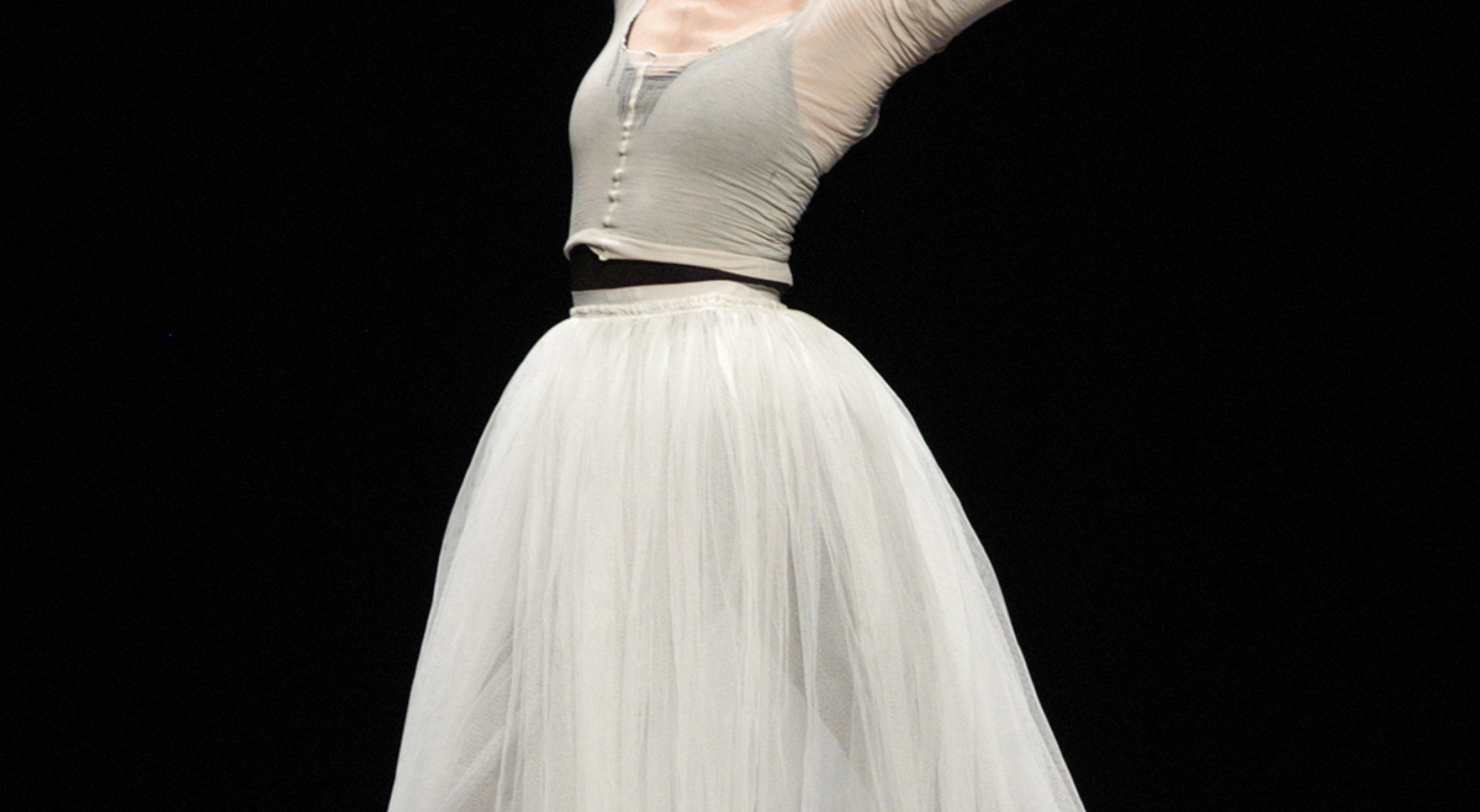Jérôme Bel
Véronique Doisneau (film)
novembernov 5
Conceived by Jérôme Bel
With Véronique Doisneau, Céline Talon, and Sujets du Corps de Ballet de l’Opéra national de Paris
Film-making by Jérôme Bel and Pierre Dupouey
Extracts of ballets Jean Coralli and Jules Perrot (Giselle), Merce Cunningham (Points in Space), Mats Ek (Giselle), Rudolf Noureev (The Temple Dancer by Marius Petipa / Swan Lake, in a version by Marius Petipa and Lev Ivanov)
Extracts of recordings of Swan Lake (Piotr Illyitch Tchaïkovski), archive recordings of the Orchestre de l’Opéra national de Paris, violin solo by Frédéric Laroque, directed by Vello Pähn, et Giselle (Adolphe Adam) recorded by the Orchestre de l’Opéra de Monte-Carlo directed by Richard Bonynge, Éditions Decca Record Company – Ltd., with kind permission from Universal Music – Projets spéciaux / France
Co-produced by Opéra national de Paris ; Telmondis // In association with France 2 // With the participation of Mezzo, le Centre National de la Cinématographie // Thanks to Merce Cunningham, Mats Ek and the Fondation Rudolf Noureev // Executive producers, Denis Morlière, Antoine Perset // Recorded at Palais Garnier : Opéra National de Paris, Director : Gérard Mortier, Dance director : Brigitte Lefèvre, Director of artistic coordination and music teaching : Hedwig Dewitte, Technical director : Stefano Pace, Assistant technical director : Christian Martin, Audiovisual director : Pierre Moitron, Production director : Caroline Ludot, General stage management : Clive Thomas, Technical stage management : Laurent Grard, Stage manager for ballet : Renaud Fauviau, Stage management for dance : Yaëlle Beuzelin, and Virginia Gris, Sound management : Bruno Puig, With the participation of the Opéra National de Paris technical teams, Video production director : Olivier Pajot, Production assistant : Magali Ailloud, Assistants and video technicians : Yves Lepoivre, Adrien Perrault, and Cédric Weber, Images : Richard Devoucoux, Richard Montrobert, and Pierre Dupouey, Sound engineers : Bastien Brionne, and Christian Vignal, Make-up artist : Catherine Lhuerre, Montage : Catherine Dubois, Emmanuelle Dupont, Editing : Jean-Claude Branger, and Cécile Jolivel, Production administrator : Isabelle Merlin, Production director : Nathalie Casimiro, Post-production assistant : Annick Waterkeyn, Assistant film-maker : Jean-Christophe Ponties, Production director : Emma Enjalbert // – copyright © France 2005 – Opéra National de Paris-Telmondis
Three names, three pieces (one of which is a film version) each of which reveals a state of Jérôme Bel’s thoughts on choreographic creation. Cédric Andrieux, Véronique Doisneau and Pichet Klunchun and myself are portraits in the true sense of the word. These pieces seek to capture the dancer’s uniqueness, and their relationship with their practice. These pieces give us a documentary, fully embodied look at those who make dance happen.
The first portrait hinges upon Cédric Andrieux’s trajectory. Trained in contemporary dance, he went on to become one of Merce Cunningham’s dancers before entering the Ballet de l’Opéra de Lyon. His experience forms a micro-history of dance. Alternating between dance and testimonial, Cédric Andrieux transposes the relationship of a body with the codes, gestures and learning processes which have shaped it.
The second portrait is dedicated to Veronique Doisneau, dancer at the Ballet de l’Opéra de Paris. Alone onstage, close to retirement, she casts a retrospective and subjective glance on her career as a dancer at the heart of this institution. Through words and gestures, she conjures up an otherwise invisible world.
Lastly, in Pichet Klunchun and myself, the portrait is a double one. The cultural distance with the traditional Thai dance performer demands a theatrical apparatus which leaves room for dialogue and alterity. Jérôme Bel and Pichet Klunchun stand face to face, both of them confronted with this reciprocal gulf in terms of codes and gestures. Step by step, they talk to each other, show each other, explain the movements, their meanings, and the way of seeing and doing them. From one tradition to another, what emerges is a fascinating mise en abyme of how dance is made, thought and conceived.
See also


